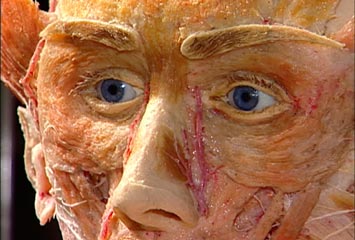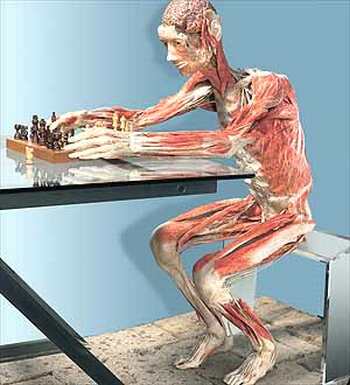 A few years ago I was in Czech Republic to witness the baptism of a dear friend. We went to Kutna Hora, home to the beautiful Sv. Barbory (Saint Barbara) Cathedral, one of the most famous Gothic churches in Europe. From Jan Svankmajer's film, I knew of an ossuary nearby that I wanted to visit. Hana repeatedly told me that I shouldn't go, but I insisted.
She was probably right. A chapel made out of creative arrangements of the bones of 40,000 humans is, it seems, not for the weak. Finding out that it was made in the late 19th century, instead of 500 years earlier, only made it worse. It provoked in me a deeper appreciation for more private cemeteries and resting places.
A few years ago I was in Czech Republic to witness the baptism of a dear friend. We went to Kutna Hora, home to the beautiful Sv. Barbory (Saint Barbara) Cathedral, one of the most famous Gothic churches in Europe. From Jan Svankmajer's film, I knew of an ossuary nearby that I wanted to visit. Hana repeatedly told me that I shouldn't go, but I insisted.
She was probably right. A chapel made out of creative arrangements of the bones of 40,000 humans is, it seems, not for the weak. Finding out that it was made in the late 19th century, instead of 500 years earlier, only made it worse. It provoked in me a deeper appreciation for more private cemeteries and resting places.
I thought of this experience when reading Denver Post writer Eric Gorski's interesting piece on an exhibition of human bodies that is touring the country. I enjoy reading Gorski because he takes the time to understand the nuances of religious issues. So many religion reporters think that they can explain complex religious issues by talking to people on opposite sides of an issue. Gorski tries to explain issues by differentiating seemingly similar views.
He looks at an exhibition in which corpses have their skin removed to show muscles and nerves. The corpses are put in bizarre positions, too, like swinging a baseball bat:
The exhibit raises questions about the existence of a creator, when life begins and the afterlife. Displaying actual cadavers -- a sight usually reserved for medical students -- also raises ethical and religious issues.
He talks to various religious leaders about their concerns, finding most clerics to be generally supportive. However, two of his Muslim sources disagree about whether the exhibit is okay. I found the following quote from the executive director of the Colorado Southern Baptist General Convention to be very interesting:
"The body is a beautiful miracle -- a major proof of the creator," [Mark] Edlund said. "In a cadaver there is no soul, no spirit. I see no Christian ethics involved."
 I am sure this is the view of Southern Baptists, but I just thought it was fascinating. Think of how the spread of Christianity -- with its central belief in the resurrection of the body -- led to major changes in the way people dealt with the human body after death. The early Christians would have universally disapproved of such treatment of the human form. They strenuously advocated burial of the human body -- contrary to many customs of the time. Obviously things have changed drastically in Christianity -- with many churches supporting the cremation that early Christians worked so hard to eradicate. I am certain that some scholars or religious leaders who represent the historic Christian position could have been found, but the wide variety of belief mentioned in Gorski's piece was interesting. I also appreciated that he found out a bit about the religious views of the exhibit's creator:
I am sure this is the view of Southern Baptists, but I just thought it was fascinating. Think of how the spread of Christianity -- with its central belief in the resurrection of the body -- led to major changes in the way people dealt with the human body after death. The early Christians would have universally disapproved of such treatment of the human form. They strenuously advocated burial of the human body -- contrary to many customs of the time. Obviously things have changed drastically in Christianity -- with many churches supporting the cremation that early Christians worked so hard to eradicate. I am certain that some scholars or religious leaders who represent the historic Christian position could have been found, but the wide variety of belief mentioned in Gorski's piece was interesting. I also appreciated that he found out a bit about the religious views of the exhibit's creator:
As for the man behind it all, [Dr. Gunther] von Hagens told Colorado reporters last week he was baptized a Protestant behind the Iron Curtain in East Germany and did not see the inside of a church for 17 years.
Von Hagens describes his belief system now as largely agnostic.
Does the master anatomist believe in an afterlife? Did souls once dwell in his ballet dancer, his soccer player, his man at leisure?
"I think my brain is not constructed to answer those questions," he said.
Too many reporters would listen to an agnostic such as von Hagens and deem his religious views unworthy of mention. But it's important when writing about one source's religious motivation to seek out information about everyone's religious motivation.
